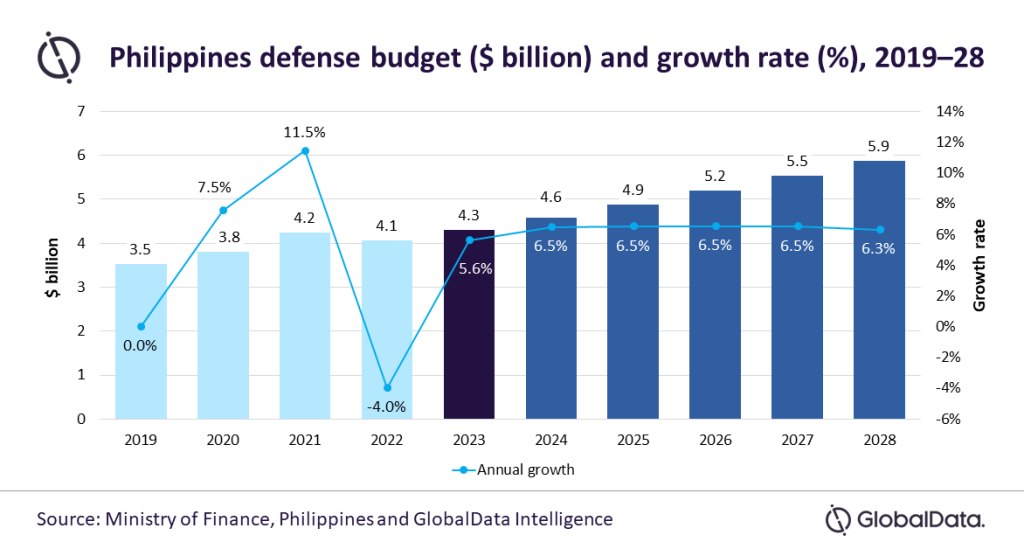
The Philippines’ Horizon defence modernisation programme is moving to the next developmental phase, where it will focus on acquiring advanced weapon systems such as fighter jets, to improve the country’s maritime and air defence capabilities.
The AFP Modernization Program started in 2013, intending to modernise the country’s defence capabilities through a 15-year phased approach. Horizon 1 was completed in 2017, with the Philippines completing Horizon 2 by the end of 2022.
Under Horizon 2, the Philippine Air Force received five more S-70i Black Hawk Helicopters from PZL Mielec.
GlobalData’s latest report, “The Philippines Defense Market Size and Trends, Budget Allocation, Regulations, Key Acquisitions, Competitive Landscape and Forecast, 2023-28,” reveals that the territorial disputes in the South China Sea have raised serious concerns among the Southeast Asian nations, including the Philippines. As a result, the country’s acquisition expenditure is expected to maintain an average annual growth rate of more than 9% between 2024 and 2028.

US and Philippines officials discussed ongoing efforts to strengthen the US-Philippine alliance. They noted with particular concern the People’s Republic of China massing of more than 40 vessels around Thitu Island earlier this month within the feature’s 12-nautical mile territorial sea.
Akash Pratim Debbarma, aerospace & defense analyst at GlobalData, comments: “Despite the adverse impact of the COVID-19 pandemic on the economy, the country’s defence budget recorded a compound annual growth rate (CAGR) of 5% during 2019-23. The Philippines’ defence budget for 2023 reflects its desire to strengthen its aerial and naval capabilities via its Horizon 3 of AFP Modernization Program.”
The Philippine Government’s commitment to modernising the AFP’s capabilities is crucial in maintaining the country’s security and sovereignty. The AFP Modernization Program is not only essential in addressing the country’s security needs but also in promoting economic growth through the development of local industries and the creation of job opportunities.
The Philippines is expected to procure Lockheed Martin F-16 fighter jets and associated weapons from the US under the country’s multi-role fighter aircraft acquisition effort. The government is also considering Saab’s JAS 39C/D Gripen as an alternative option. The need to deter China among the Southeast Asian countries has opened a lucrative market for western defence companies.
Against the backdrop, the Philippines defence market is set to expand at a CAGR of 6.5%, with the projected cumulative defence spending reaching $26bn in 2028, forecasts GlobalData, a leading data and analytics company.
The US and Philippine armies held a military training exercise this month. Known as ‘Salaknib’, the practice involved over 3,000 troops trained in various military operations.
As the AFP Modernization Program enters its third phase, the country’s government remains committed to ensuring the successful implementation of the programme.
The AFP Modernization Program is a significant investment in the country’s defence capabilities and is expected to impact the country’s overall security and economic development positively.
With the Philippine defence market projected to grow significantly in the coming years, the country’s commitment to modernising its defence capabilities will provide opportunities for local and foreign defence companies to participate in the program and contribute to its growth and development.
Debbarma concludes: “The Philippines is anticipated to maintain its total defence spending at about 1.1% GDP and increase the acquisition budget at an average share of 20% every year starting 2024. This will likely eat away into the shares of the maintenance and other expenditure provisions within the overall defence budget of the country.”








